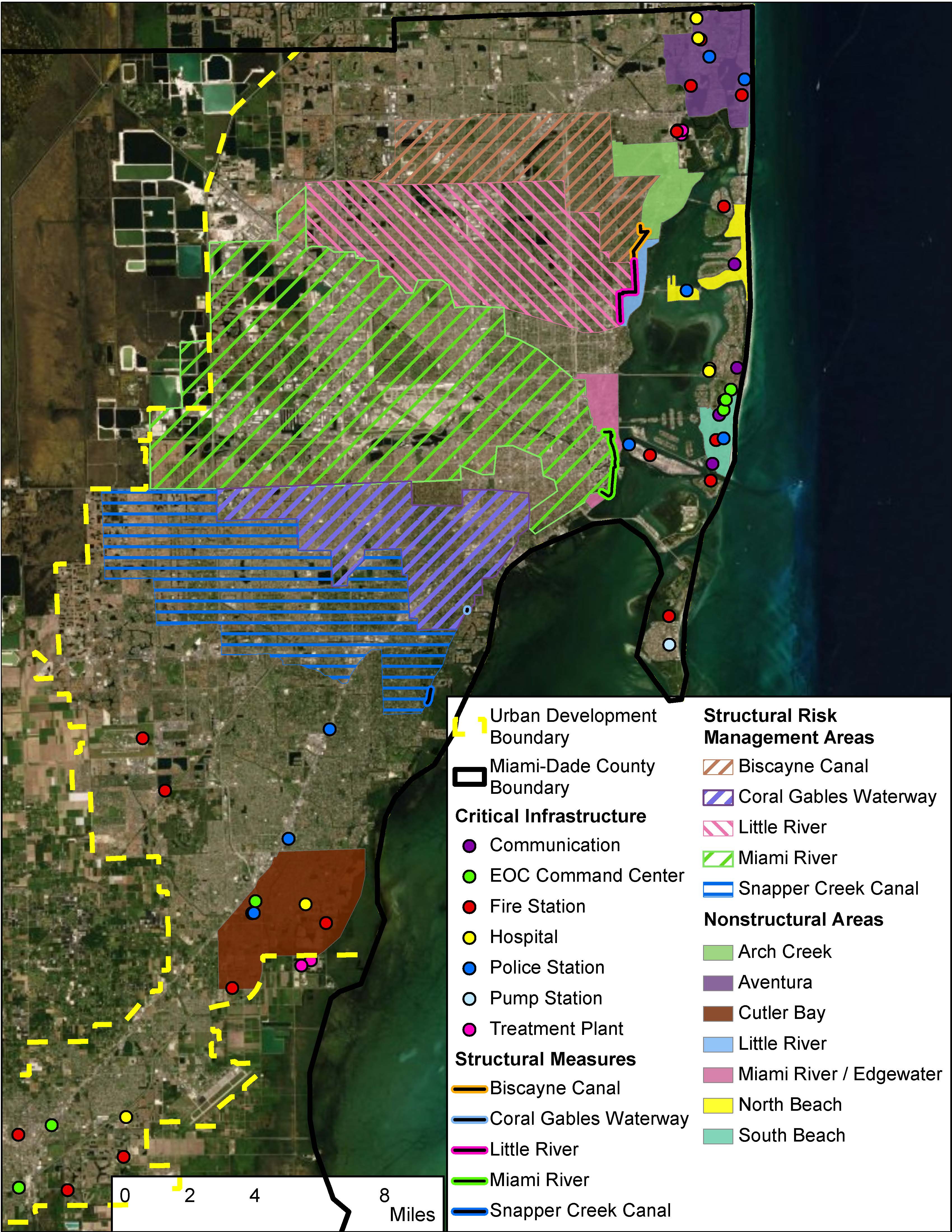
Background Information: The Miami-Dade Back Bay Coastal Storm Risk Management Feasibility Study was re-initiated on August 3, 2022. This study is a response to the study authority (Public Law 84-71, June 15, 1955) which authorizes an examination of the coastal and tidal areas of the eastern and southern United States, with particular reference to areas where severe damage has occurred from hurricane winds and tides. The study authority allows for an examination of impacts from coastal storms while considering sea level rise over a 50-year period of analysis. The study purpose is to reduce coastal storm risk through the implementation of coastal storm risk management measures designed to reduce potential damage caused by coastal storms, including preventing loss of human life. The region is well known for its risks of coastal flooding from hurricanes and tropical storms. Sea level rise has increased these risks and will continue to do so in the future.
During the first twelve months of the study re-initiation, the U.S. Army Corps of Engineers Norfolk District (NAO) and Miami-Dade County, the non-federal sponsor for the study, will develop a new alternative to the previously developed Recommended Plan (2021). The new alternative will integrate measures from the Recommended Plan (2021) that received broad support and modify/replace measures that raised local concerns.
A milestone meeting will be held in August 2023 with the Office of the Assistant Secretary of the Army for Civil Works to determine if the feasibility study will continue for an additional four years through 2027. The purpose of the milestone meeting will be to evaluate the progress on plan formulation, ensure continued alignment of objectives between the NAO and Miami-Dade County, and to verify the scope and schedule for completion.
If the feasibility study is approved to continue in August 2023, the study would extend by sixty months and federal funding for the study would increase up to $8.2 million.